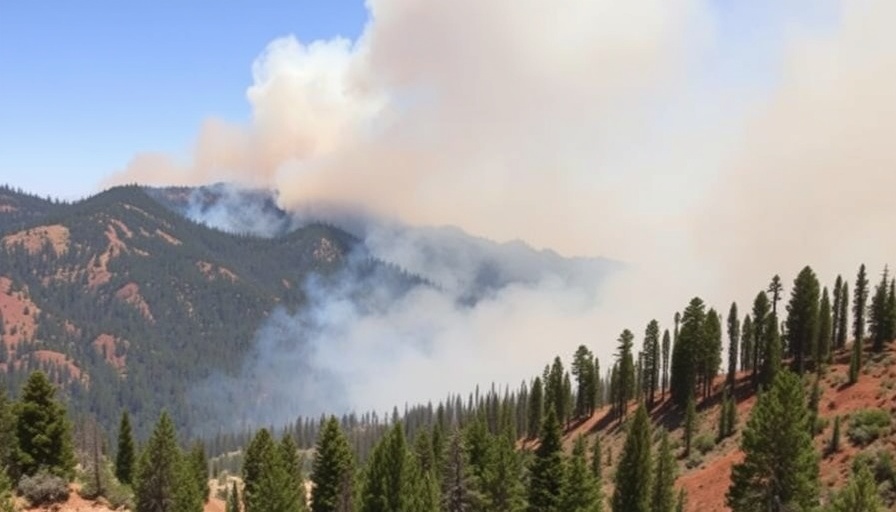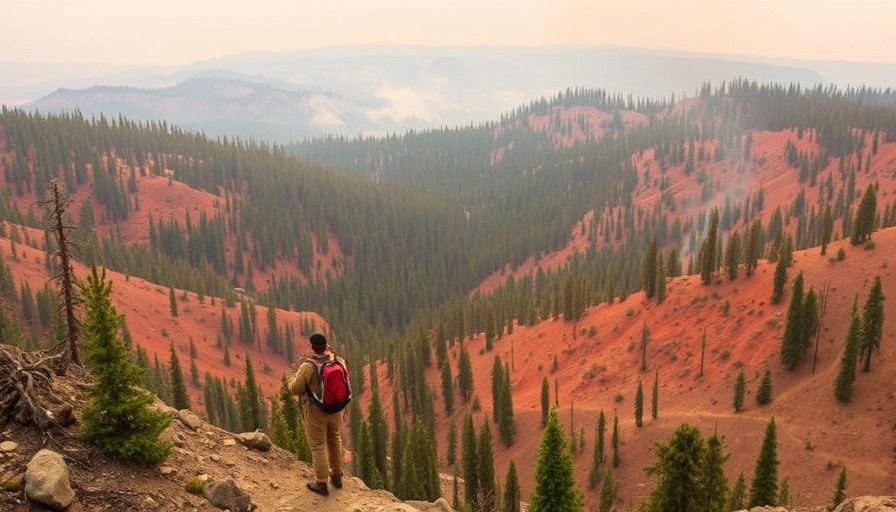
Escalating Threat: Wildfires in National Parks
Evacuations have become an urgent necessity at two iconic national parks in the western United States, the Grand Canyon in Arizona and the Black Canyon of the Gunnison in Colorado, due to wildfires intensifying under treacherous weather conditions. As we enter what experts are calling a particularly severe wildfire season, it's critical to understand the events unfolding and the broader implications for both nature enthusiasts and local communities.
The Current State of Wildfires Across the West
In recent weeks, fire activity has surged dramatically across eleven states. The dry landscapes, coupled with record-high temperatures and severe wind conditions, have created an explosive wildfire environment. At the Black Canyon of the Gunnison, which closed this past Thursday, wildfires sparked by lightning have already ravaged over 1,640 acres with zero containment by Friday afternoon. The situation in the Grand Canyon is no less dire, with close proximity fires in Coconino County forcing the evacuation of visitors and nearby residents.
Living With Wildfires: A Growing Challenge
As wildfires continue to threaten iconic landscapes, it's clear we are not adequately prepared to handle the increasing frequency and intensity of these events. According to critics within the National Interagency Fire Center (NIFC), the current firefighting resources are stretched to their limits, raising concerns over public safety and fire management. Over 11,400 firefighters are actively engaging these blazes, yet analysts warn that as human activities such as camping and hiking increase, so do the risks associated with igniting new fires.
What Can Homebuyers and Investors Learn?
This wildfire crisis holds important insights for homebuyers, sellers, and property investors, especially those considering locations near national parks or regions prone to wildfires. Understanding the risk factors and the potential for future wildfires can influence real estate decisions significantly. Areas close to these parks may see fluctuating property values or increased insurance costs as climate patterns shift and wildfires become more frequent.
Future Trends in Property Investment Amid Wildfire Risks
Investing in property near recreational areas presents unique opportunities and challenges. As families seek out homes with access to nature, the demand often outweighs concerns regarding environmental risks. However, forward-thinking buyers should be equipped with knowledge about sustainable practices and eco-friendly homes, which are becoming increasingly relevant in wildfire-prone areas. The emphasis on creating defensible spaces around properties—using fire-resistant materials and landscaping—will not only enhance safety but also appeal to environmentally conscious buyers.
Engaging with Local Communities: Your Role
As wildfires disrupt lives and nature, community engagement becomes vital. Homebuyers and investors should think about their roles within the local context and how they can support preventive measures or recovery efforts. Championing sustainability in home design and adhering to responsible recreation practices can make a profound impact on reducing fire risks.
Act Now to Understand Your Environment
Wildfires are reshaping our landscapes and must be taken into account by anyone considering real estate investments. By staying informed about local environmental conditions and advocating for sustainable living practices, you can make knowledgeable decisions that foster a safer, more responsible community. As fire season progresses, consider how you can protect your future investments while also nurturing the beautiful environments we cherish.
Call to Action: Join the conversation on sustainable home practices and wildfire preparedness! Share your strategies or questions on our platform, and let us work together to create safer, eco-friendly investments.
 Add Row
Add Row  Add
Add 





 Add Row
Add Row  Add
Add 








Write A Comment